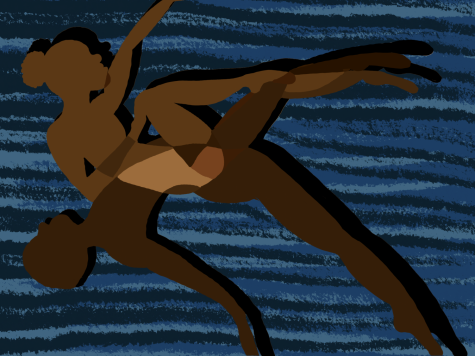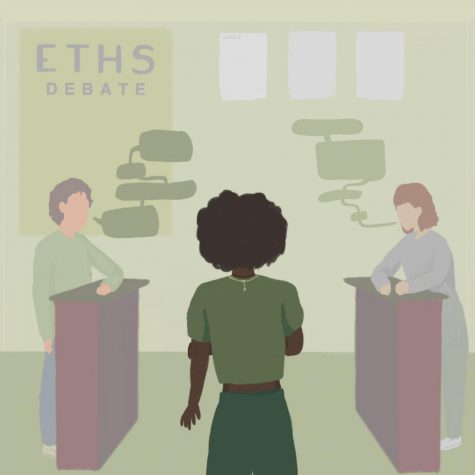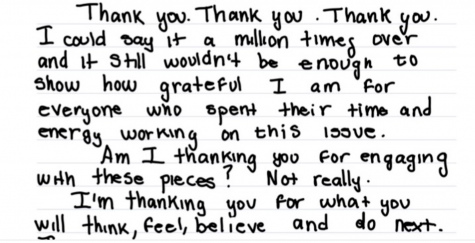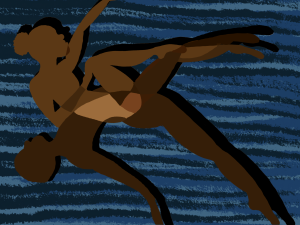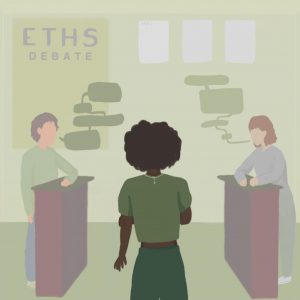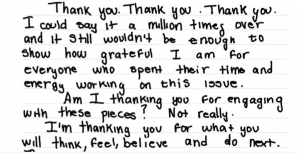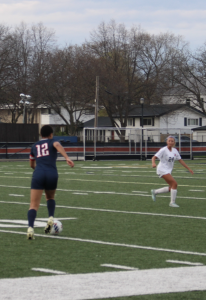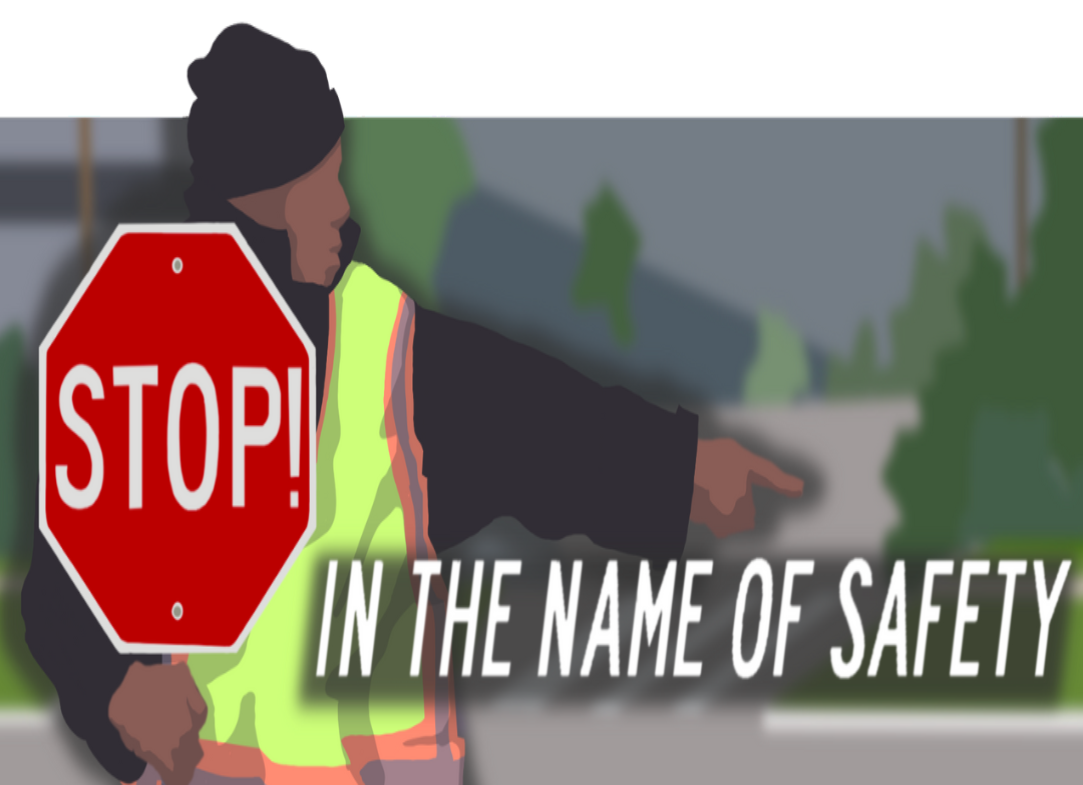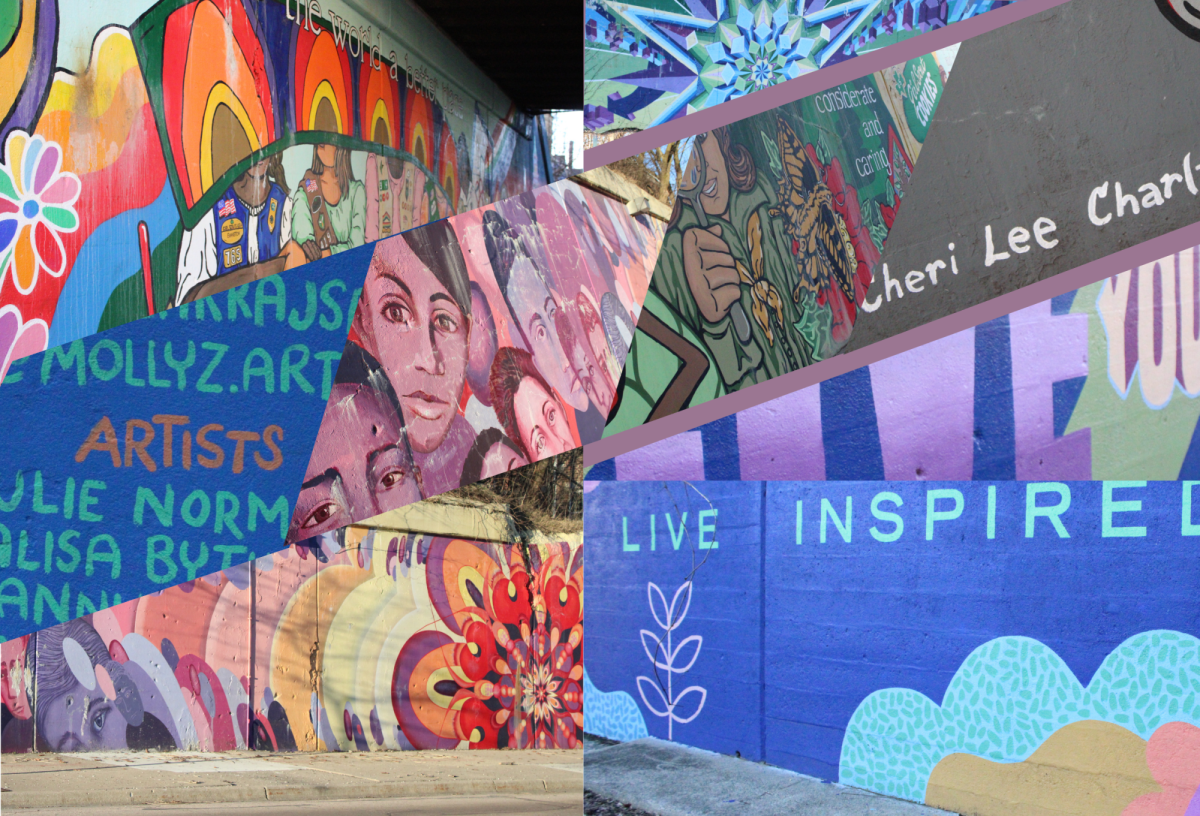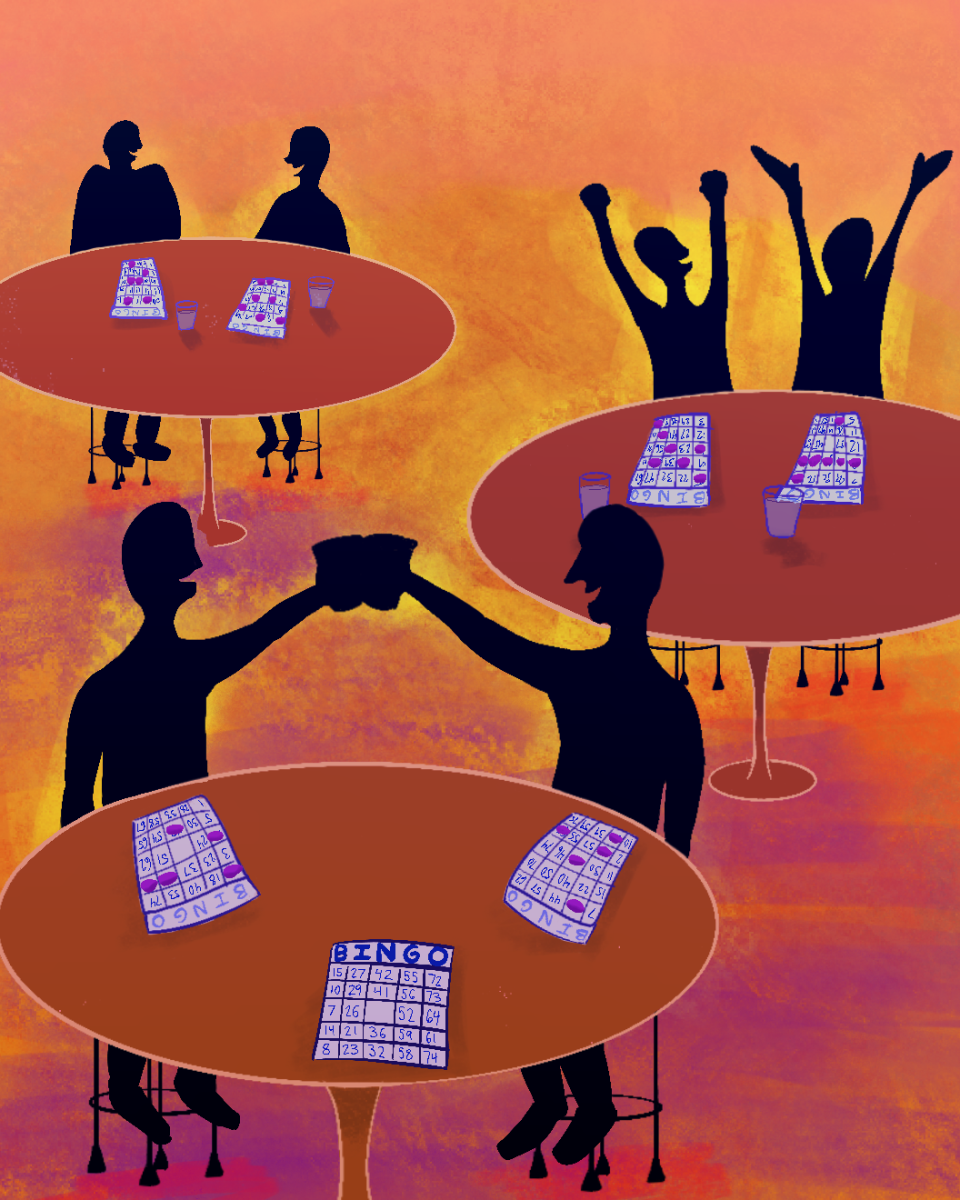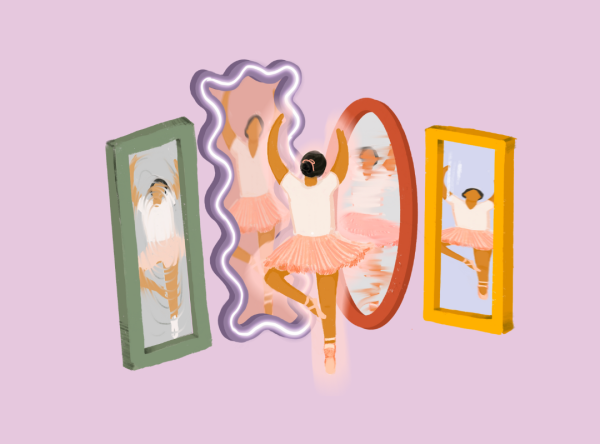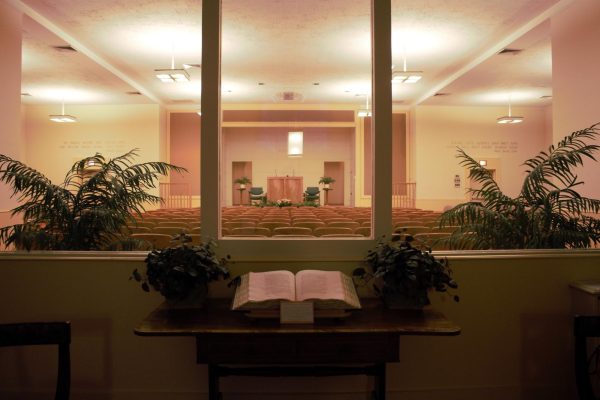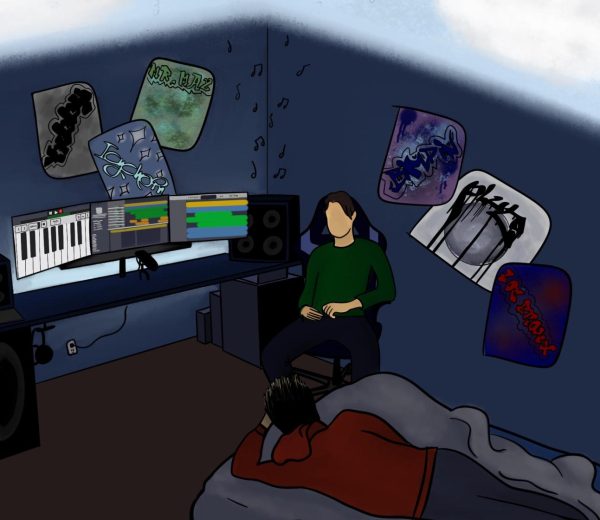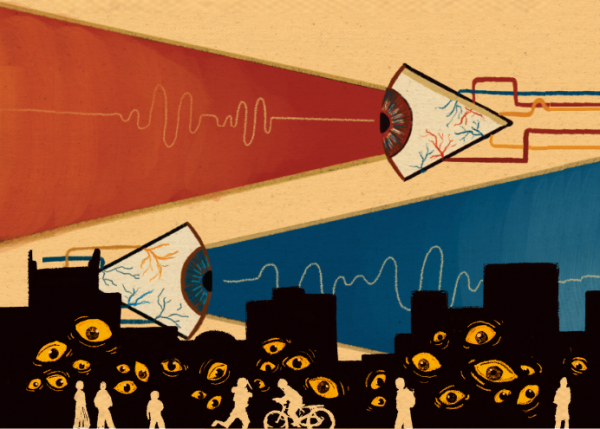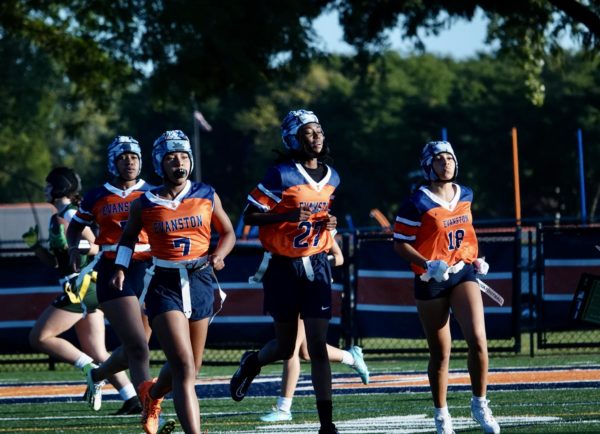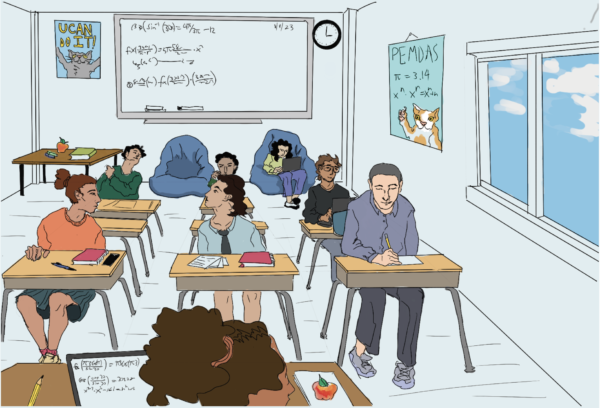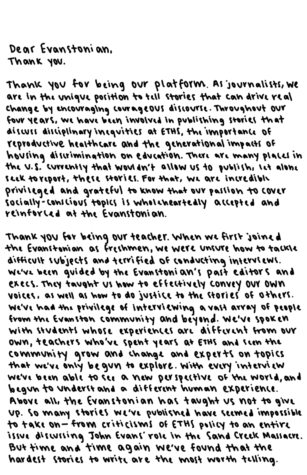Editorial | We resisted reality; you should too: a reflective issue of the Evanstonian
February 22, 2021
Reflection is looking. It is taking long stares, not at what you want something to look like, but what it is. This month, we sat, we stared and then we broke the mirror.
The February issue of the Evanstonian serves as a jumping-off point for what the future of the Evanstonian can be, so long as we continue to examine the role and presence of anti-Blackness in our publication. This issue was not written to “solve racism” or to defend the ludicrous idea that the Evanstonian’s staff or stories have reached some sort of racially utopic state. No. The overarching themes and driving questions for this issue, ones that we asked all contributors for this issue when we started this process, are “What does freedom of expression without having to appease a white audience, and without white writers, look like?” “How has the Evanstonian perpetuated and upheld white supremacy throughout its history and today?” and “How could we change this reality in the future?” These questions are daunting; answering them would take hundreds, if not thousands, of stories to genuinely capture the scope of how the Evanstonian, ETHS as an institution and the influences of our school culture have contributed to the Evanstonian’s racist practices throughout its history and today. Although, as discussed further in the “Past” section of this issue, our publication has made tremendous strides in how our newsroom operates and whose voices are heard in our publication, this work is never, ever, over. Here, there are fifteen pieces about how we, the Evanstonian, continue to forge that future. Continuing this work from the inside out and interrogating how the Evanstonian can be more reflective of its purpose are some of the numerous ways we can better and more equitably serve our peers.
It was my executive decision that allowing non-BIPOC writers to contribute to this issue would have been counterintuitive. The February issue hoped to provide an affinity space for BIPOC writers, artists and readers alike. This issue wasn’t written or organized by or for non-BIPOC people, it was created so we could have a space to write honestly, with people who looked like us. We want to acknowledge the possibility and the strength in our communities that have been stifled consciously or subconsciously by the extremely white space the Evanstonian creates. Truthfully, there should be no justification for this decision, a decision that was made for one out of thousands of issues of the Evanstonian. Many of the students on this month’s staff have previously been on our staff and did not continue, some of this months’ staff is currently on the Evanstonian staff and some have never written for the Evanstonian before. In my opinion, we did not just build a staff but built an immovable community in less than two months.
After working with everyone in said community, all I can say is that I have never felt more at home; I have never felt more bad for my freshman self who walked into the Evanstonian office for the first time and was surrounded by white, worried faces. One valuable truth that was emphasized through this experience is that these spaces need to be more accessible and they need to exist in the radical way that they did for this issue. Claiming to “work on” or “commit” to being a more equitable community vastly contrasts action, it vastly contrasts immovable belief systems, it vastly contrasts communication and understanding the communities you represent.
We invited you into our newsroom, our archives and the realities of our space because we want all of our fellow Evanstonians to see the potential of our publication. This month, the Evanstonian is imagining how we can constantly practice anti-racism, how we can constantly see ourselves, not as groups, but as individuals in the stories we hold. Not for the experiences we can “contribute,” but as human beings. We’re conceptualizing how whiteness does not have to dictate journalism or the stories we tell within Evanston. This is a fraction of what we could be if we truly, deeply reflected one of the most important phrases in our mission statement: “to accurately represent the ETHS student body.”
We, the Evanstonian, are looking in the mirror and seeing the ways have failed, and how we can improve as a publication.
We are illuminating how resisting these oppressive structures, practices and institutions has brought joy in being together. We have resisted reality, and we, or at least I, have come out the other end understanding how much hope lies within what can sometimes seem like such a lonely world and even lonelier institution. I would be remiss to fail to acknowledge the tremendous amount of love and thought and care that have gone into these stories and how much emotional and mental labor has been done over the past two months to create this extraordinary issue. Thank you to all of our contributors: Journee Adams, Saliha Ansari, Carmiya Bady, Serena Brown, Joan Camaya, Adrian Cyrus, Cheyenne Edwards, Angie Gomez, Tamara Guy, Quinn Hughes, Linnea Mayo, Eva Morales-Grahl, Mika Parisien, Karel Pene Njine, Mateo Perez, Anika Radhakrishnan, Kamau Ransom, Taryn Robinson, Meena Sharma, Kupu Sumi and Sophie Yang.
So, without further adieu, this is us, telling our stories.


